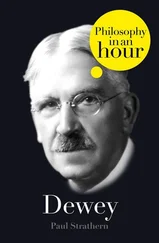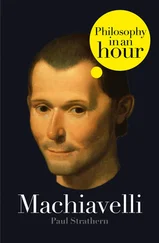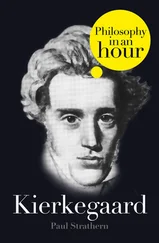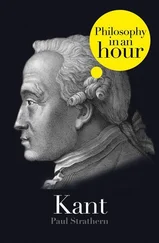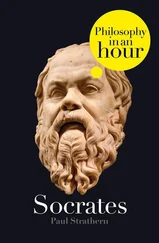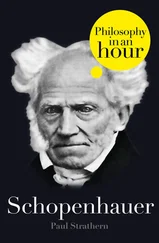By the time Leibniz had finished all this he was almost twenty, but when he applied for a degree the university told him he was too young. Having been found deficient in the one numerical system he was unable to master, Leibniz left Leipzig never to return. Instead he went to Altdorf, the university town of the free city of Nuremberg, where they immediately awarded him a doctor’s degree and offered him a professorship. The latter he declined, saying that he had ‘very different things in mind’.
Leibniz was ambitious and wanted to become a power to be reckoned with in the world. Fortunately for the world, he never achieved this – at least not in the manner he hoped. (Yet what did he hope for? What, under the circumstances of the age, could he have hoped for? A leading political post? Are we to picture one of the greatest minds of all time working as chief advisory minister to a German princedom the size of Rhode Island? Goethe may have occupied a similar position a century later at Weimar, but this was all grist to the mill for literature. Leibniz would certainly have taken a more active role. We can only imagine what the new drainage scheme, the express carriages, the revolutionary windmills, the Harmonious Guild of Alchemists, and law courts presided over by calculating machines would have looked like with Leibniz in charge. To say nothing of the effect on the citizens’ sanity.)
Doubtless with all this in mind, Leibniz now began putting himself about socially amongst the upper echelons of society. Eventually he was given a minor post at the court of the Prince elector, the Archbishop of Mainz, Johann Philip von Schönborn. The titles of German princes in those days were usually in inverse proportion to the size of the territory they ruled and their general importance. Johnny Beautifulborn’s comparatively modest string of titles indicated a man with some clout on the German political scene.
At this time the map of German-speaking Europe looked like a Ming vase dropped from a great height and reassembled by a surrealist. This piece of rococo fantasy was called, with equally surrealist panache, the Holy Roman Empire (its name failed on all three counts). Most of the separate princedoms, palatinates, electorates, and whathaveyous which made up this unempire lived in a fairly easygoing, quasi-independent state, and the whole place was probably as oddly pleasant to live in as it looked on the map. Things were just beginning to pick up after the Thirty Years’ War, and most people were only too pleased to live in a state of obscure provincialism ruled over by some harmless twit with an enormous name.
Unfortunately things were different across the Rhine in France – where instead of having nearly two hundred rulers and only one cheese worthy of the name, they now had just one ruler and a gastronomy fit for the Sun King at Versailles. Louis XIV was feeling in an expansive mood; France was Catholic, and many of the tiny German states across the Rhine were Protestant (or Catholic, it didn’t really matter). The Archbishop of Mainz realised that somehow Louis had to be diverted from expanding into Germany. He discussed this matter with the bright young adviser who had just joined his staff, and in no time Leibniz proposed an ingenious scheme. Why didn’t the archbishop try to interest Louis in a crusade, in mounting a great expedition to conquer Egypt? And if other countries could be persuaded to join in this holy war against the unbelievers, it might even pave the way to a harmonious reunion of the Catholic and Protestant churches.
The archbishop was overcome by this daring scheme, and Leibniz was at once dispatched to Paris to present it to Louis. But here Leibniz found himself encountering a few difficulties. It wasn’t easy to gain an audience with the Sun King at Versailles. You had to persuade his ministers that you were on an important mission, and Louis’s ministers didn’t seem to appreciate the seriousness of Leibniz’s plan. This included a wealth of compelling detail, including route maps, the size of army required, and diagrams of which cities to attack first. All these had been drawn up by a master German strategist whose purely theoretical military expertise and wide reading on the subject far outweighed that of any mere general. But Louis’s ministers would insist on pointing out that France hadn’t undertaken a crusade since the days of St. Louis, more than four centuries earlier.
Leibniz was to spend the next four years in Paris, though his enthusiasm for promoting his Egyptian project soon dwindled. He had far more important things to do (at the archbishop’s expense). In those days Paris was recognised throughout Europe as the world’s leading cultural and intellectual center, a situation which remains unchanged to this day in the eyes of its inhabitants. Leibniz quickly began circulating through the salons and attempting to meet as many leading intellectuals as he could. His temperament may have been that of a mad professor, but at this age he was still fairly good at disguising the fact. Fitted out in his best court finery, he cut quite an elegant figure, and under such circumstances his overpowering mental brilliance could easily be mistaken for sheer youthful vitality. The Duchess of Orleans, who appears to have regarded intellectuals much as we do now, was particularly impressed by this young German egghead: ‘It is so rare [for an intellectual] to be smartly dressed, and not to smell, and to understand jokes’. The duchess, who on the side was a bit of an intellectual herself, soon befriended Leibniz – one of the earliest of a whole string of well-connected duchesses and princesses with whom Leibniz kept in contact for the rest of his life.
Despite all this socializing, Leibniz remained as mentally hyperactive as ever. A cornucopia of brilliant ideas flowed from his brain, several of such fundamental importance that any one of them would have guaranteed its originator immortality in his field. It was during this period that he invented integral and differential calculus. He also discovered binary arithmetic, though he assumed (wrongly) that the Chinese had discovered this before him – as he understood (correctly) that it was implicit in the Yin and Yang theories of the I Ching. (Such a perception is typical of Leibniz’s sheer range.) Where the more familiar decimal system uses ten digits (0–9), binary arithmetic uses only two (0 and 1). This may appear long-winded, e.g., 1=1, 2=10, 3=11, 4=100, on to 9=1,001, 18=010010, and so forth. But Leibniz discovered that when certain categories of binary numbers (such as triples, for instance) are listed one below another, the 0s and 1s in the vertical columns often repeated in regular periods. This prompted him to hope that he might discover some entirely new general rules of mathematics – though he never realised this aim. He did realise, however, that binary is ideal for a mechanical system, which can work on simple stop-go or full-empty operations. With hindsight we can see that this is particularly the case for a system driven by electricity, with positive and negative. This has led to binary arithmetic being used in computers. Leibniz attempted to exploit the mechanical advantage of binary, and even sketched a calculating machine which incorporated his new mathematics. Yet he soon realised that such a machine was beyond available technology.
At this time the new philosophy of Descartes (Cartesianism) was the structuralism of the day amongst the Parisian chattering classes. But unlike structuralism (which treats a text as a structure, devoid of an author) it could also be taken seriously. Descartes’s philosophy represented a radical break with the Scholasticism of the medieval era. Instead of appealing to authority (that is, the largely Aristotelian teachings of the past), it was based upon reason and scientific method. Knowledge was built up, step by reasonable step, starting from indubitable certainty. The resemblance to mathematics was not coincidental. Descartes also excelled in this field. It was he who proposed the notion of coordinate geometry (whose Cartesian coordinates are named after him). By means of three axes (coordinates) standing at right angles to one another in three dimensions, the position of any point in space could be plotted with coordinate values.
Читать дальше


